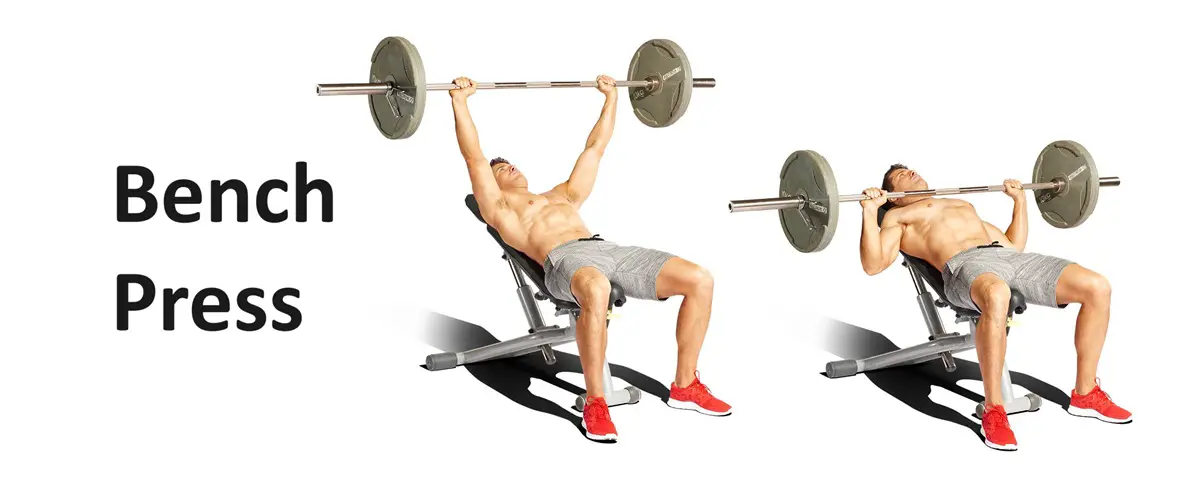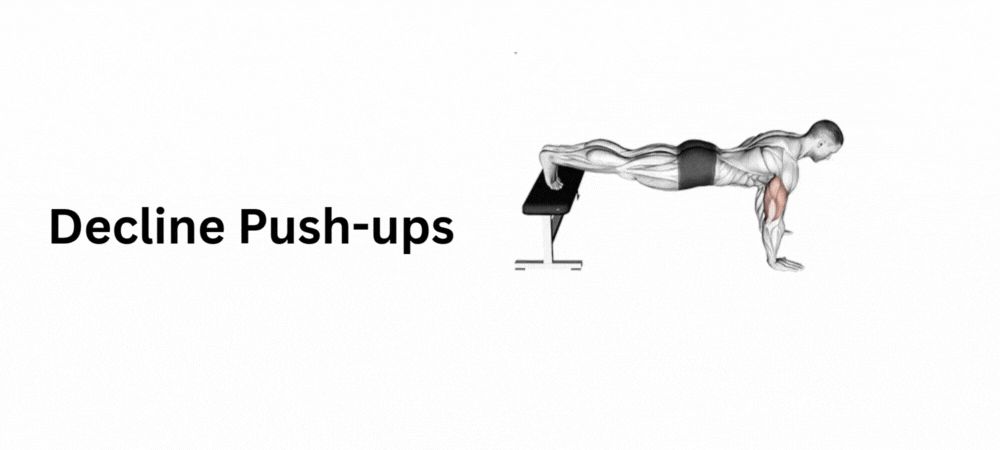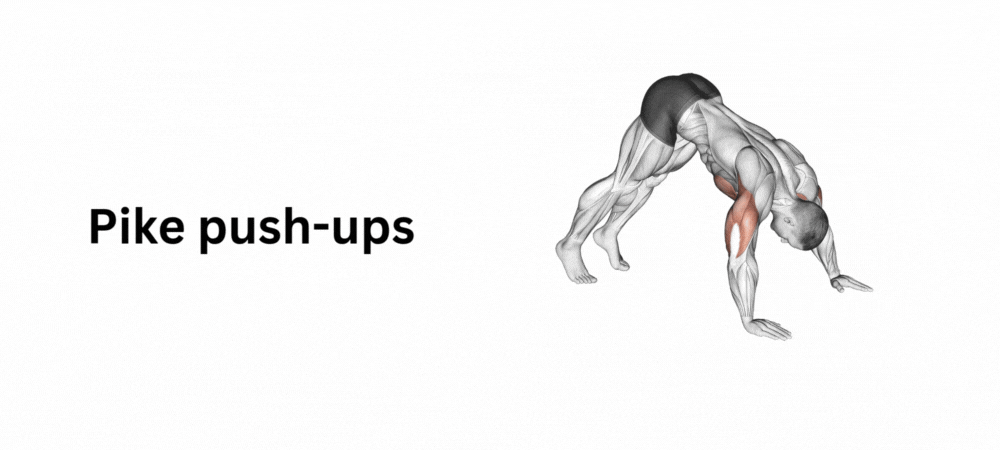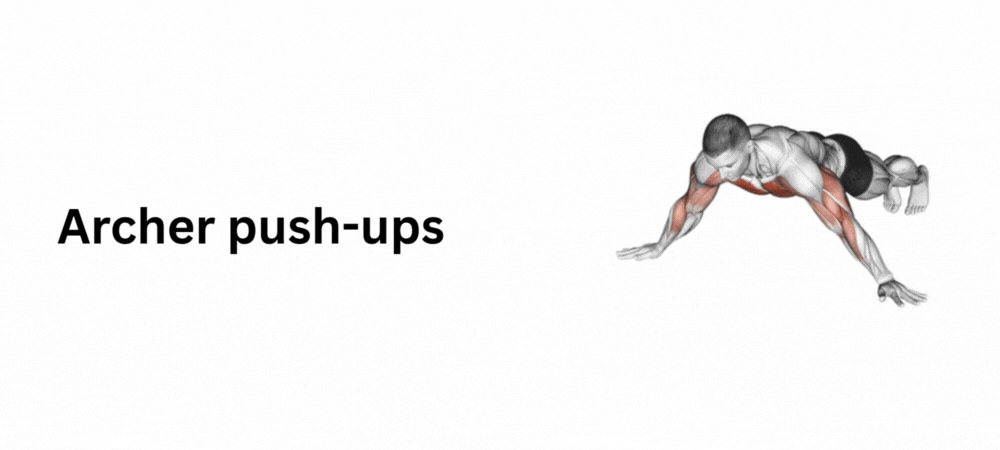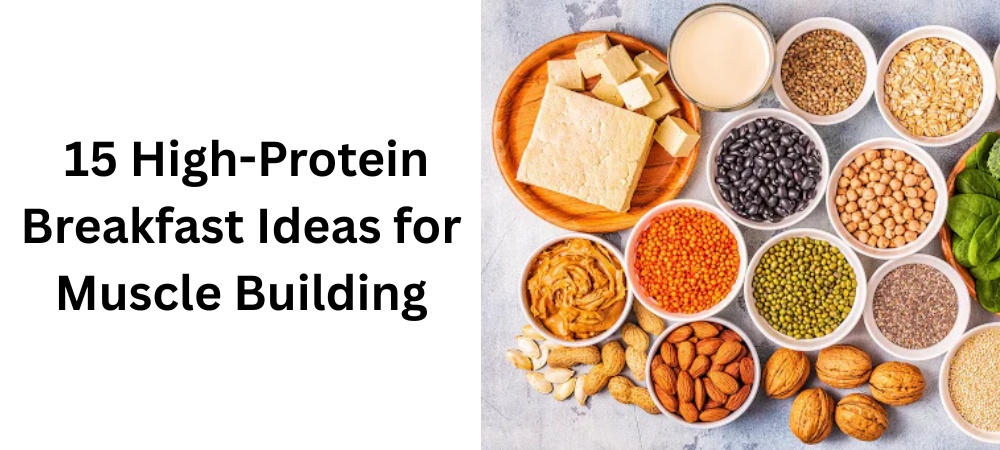The bench press is a foundational strength-building exercise that primarily targets the chest, shoulders, and triceps. Utilizing a barbell or dumbbells, this compound movement is performed lying on a bench, aiding in developing upper body strength and muscle mass. Known for its effectiveness in building a robust chest and improving overall upper body strength, the bench press is a staple in strength training routines. In this comprehensive guide, discover the technique, benefits, and alternative exercises related to the bench press.
Instructions for Bench Press
Setup:
- Position: Lie on a flat bench with your feet planted firmly on the ground and your back, head, and shoulders in contact with the bench.
- Grip: Grab the barbell with a grip slightly wider than shoulder-width apart. Ensure a comfortable and secure grip.
Execution:
- Lowering Phase: Lower the barbell slowly towards your chest by bending your elbows, keeping them at a 45-degree angle to your body.
- Depth: Lower the barbell until it lightly touches your chest or reaches a comfortable depth.
- Pushing Phase: Push the barbell upward by straightening your arms, driving the weight back to the starting position while exhaling.
- Repeat: Perform the desired number of repetitions while maintaining control and proper form.
Tips:
- Keep your wrists straight and elbows tucked close to your body to maintain proper form.
- Maintain a slight arch in your lower back for stability, but avoid excessive arching.
- Use a spotter for safety, especially when lifting heavy weights to ensure support and assistance if needed.
Benefits
- Chest and Upper Body Strength: The bench press is highly effective in targeting the chest, shoulders, and triceps, aiding in increased upper body strength and muscle development.
- Muscle Hypertrophy: Regularly performing bench presses contributes to muscle growth in the chest, shoulders, and arms, enhancing muscular development.
- Functional Movement: Mimicking pushing movements, the bench press enhances functional fitness, benefiting everyday activities that require upper body strength.
- Bone Health and Joint Stability: When performed correctly, the bench press can improve bone density and strengthen shoulder and chest joint stability.
- Versatility: The bench press can be modified with different grip widths and incline angles to target different areas of the chest and shoulders.
Alternatives
If the bench press is unavailable or you’re seeking alternative exercises for variety in your upper body workout routine, consider these options:
- Dumbbell Press: Similar to bench pressing but using dumbbells, allowing for a greater range of motion and engaging stabilizing muscles.
- Push-Ups: A bodyweight exercise targeting the chest, shoulders, and triceps, suitable for varying fitness levels and easily performed without equipment.
- Machine Chest Press: Utilize a chest press machine at the gym to work the chest and shoulders with controlled movement and adjustable resistance.
- Dumbbell Flyes: Lie on a bench and perform flyes with dumbbells, emphasizing chest muscle isolation and stretching.
- Incline Bench Press: Altering the angle of the bench to an incline targets the upper chest muscles more intensely.
Incorporating these alternatives into your workout routine can provide a diverse upper-body workout, aid in building strength, and prevent muscle imbalances.

